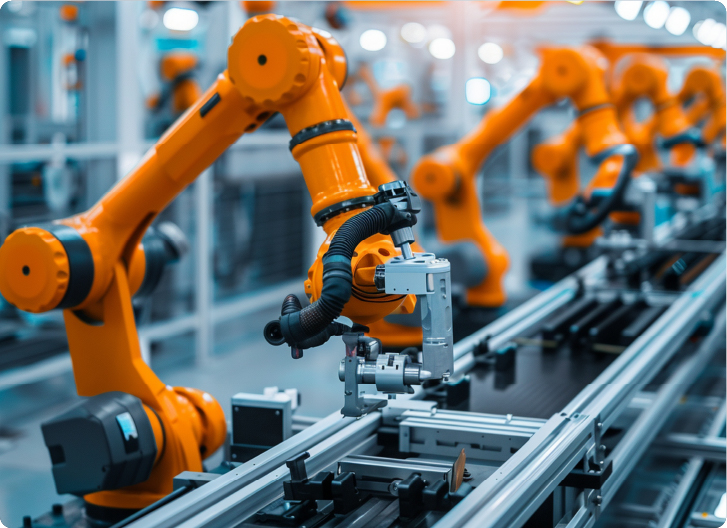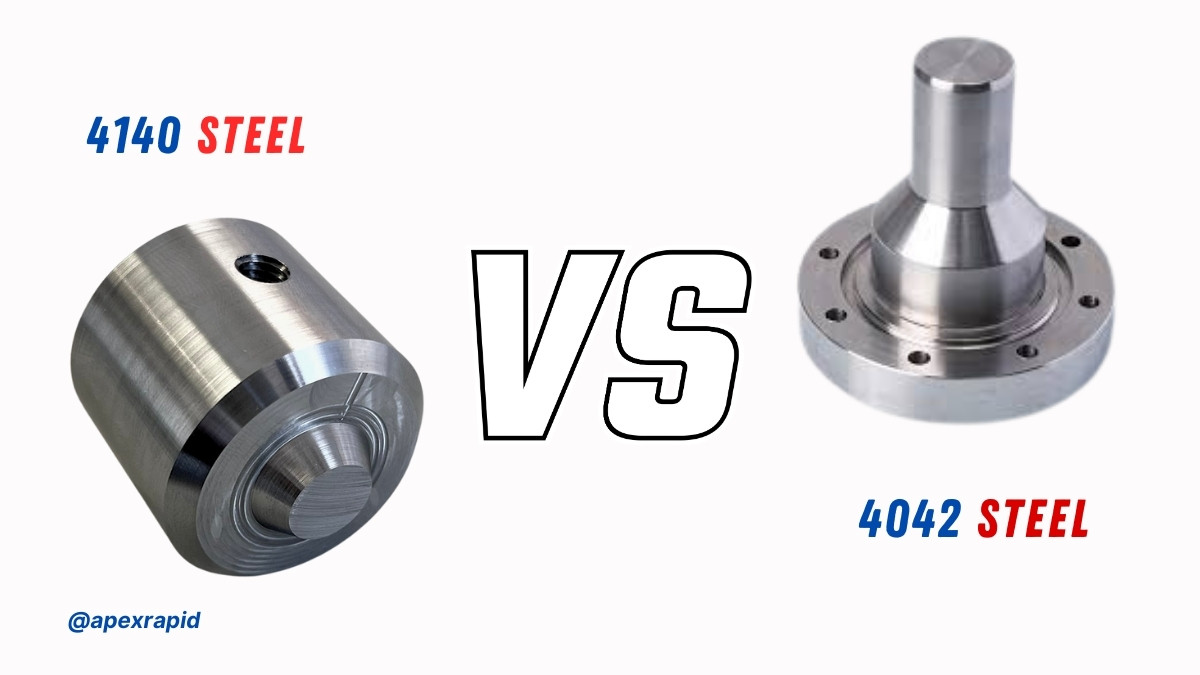
Each material decision is reflected in your shop’s bottom line quickly. You already know machining is not simply the cutting of metal anymore. It is concerned about feed stability, tool life, and finish control. That is why the choice of steel affects more than just strength ratings.
You have previously handled 4140 steel in harsh conditions. It can withstand torque under pressure and is a heat-resistant alloy. But when it reaches the spindle, you may encounter troubles. Machining may tend to incur rapid tool wear, poor chip break, and chatter. These problems can cause slower RPMs, shorter inserts, and more coolant. Even so, it still requires post-processing or polishing.
You might have worked with 4140 steel in tough environments before. It’s not about the cost, it’s how it cuts. You will see cleaner surfaces, smoother chip flow, and more predictability. 4140 alloy operates at a lower temperature, minimizes deflection, and allows smooth feeds. That makes a difference for high-speed turning or batch CNC runs. You save time, prevent rework, and enhance part consistency. Let’s explore the core distinctions between 4140 Vs 4042 steel.
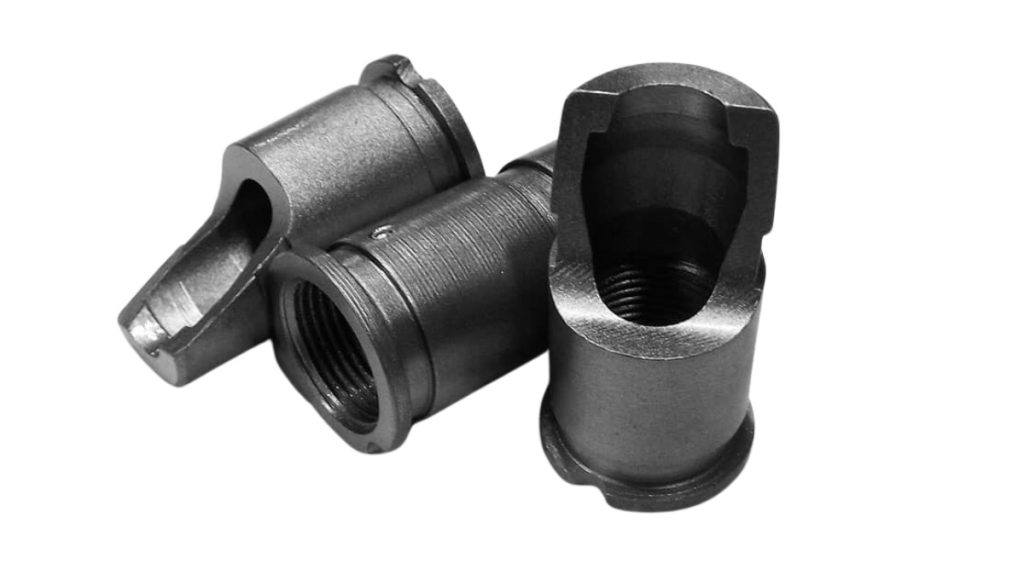
4041 Steel Machining
4140 steel is commonly used in machining for its strength and durability. It is often chosen for making parts such as shafts, gears, and tooling due to its suitability in high-stress environments. It comprises chromium and molybdenum content of steel that delivers excellent wear and fatigue-resistant properties, making it perfect for more severe applications.
4140 steel can be heat-treated during machining to control hardness. Therefore, it is highly versatile in tasks. When in an annealed state, it lends itself quite readily to machining, while in a hardened condition, care must be taken to maintain the cutting speeds and pitch speeds and avoid work hardening. This is why machinists need to make the right choice of process and tooling to obtain the desired requirements.
Moreover, the weldability of 4140 steel makes it an optimum choice for fabrication and joining parts. It is excellent for applications that involve abrasion and high impact, a testament to the reliability of the components subjected to repeated stress. Besides, 4140 proves to be an ideal material for critical components whose performance must last for long periods, from milling to turning.
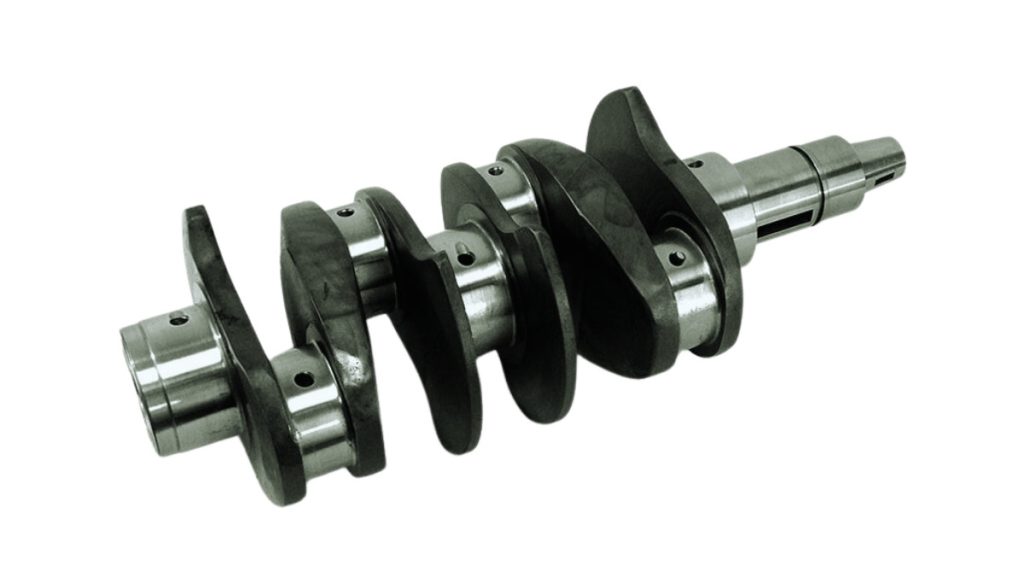
4042 Steel Machining
4042 steel is an advanced alloy steel type. It holds high strength and elastic properties. It includes carbon, chromium, and molybdenum, which make it more wear-resistant and tough. It is perfect for such parts as shafts, gears, and fasteners. These are usually subject to high-pressure and abrasion conditions.
With its hardenability, 4042 steel can be heat-treated well. This flexibility makes it applicable to a broad array of applications, from automotive parts to industrial machinery. Its capability to work with high mechanical loads for long periods makes it good for heavy-duty uses.
In addition, 4042 steel has good machinability, and, therefore, it is easy to work with compared to some other high-strength alloys. This property is particularly useful for industries such as aerospace and construction, where precision and reliability play an important role. Its strength, durability, and machinability render 4042 steel a sound choice for harsh settings.
The 4140 steel is a chromium-molybdenum alloy. It is commonly used in machining applications and has around 0.38% to 0.43% carbon. Carbon content gives a combination of hardness and strength to 4140 steel. The chromium content lies in the intervals from 0.75% to 1.0%, which improves the wear resistance. Chromium content enhances the steel’s ability to resist stress and retain its form under load.
Aside from this, 4140 has Molybdenum in a range of 0.15% to 0.25%. This attribute increases hardenability and avoids grain growth. Besides, Molybdenum in 4140 increases its toughness during heat treatment. The range of the manganese content is 0.75% to 1.0%, which improves 4140 toughness for forging uses. Silicon ranges from 0.15% to 0.30%, which validates its oxidation resistance at high temperatures.
Despite all these benefits, nevertheless, 4140 hardens up during machining. It may thereby increase its tool wear and speed up cutting speeds.
4042 steel has a reputation for being strong and tough. Similar to 4140, its carbon content is 0.38% to 0.43%, giving solid hardness. However, 4042, distinguished by its larger nickel content ranging between 1.65% and 2.00%, jumps out as a special case. Nickel increases its toughness, crack resistance, and fatigue strength of the steel. It allows 4042 to behave satisfactorily in impact and high-stress environments.
The chromium content in 4042 is at 0.70%-0.90%, being the same as 4140, and increases its hardness and wear resistance. Molybdenum percentage remains around 4042 is 0.20%- 0.30% which improves it’s hardenability and also hardens the steel during heat treatment. Manganese content is 0.60 % to 0.80 % assists in improving ductility and diminishing brittleness.
The increased alloy content in 4042 makes it a harder contender for cracking under stress. This steel is perfect for any application where toughness and strength are of primary concern. Generally, in aircraft parts and heavy-duty machinery components, it has widespread use.
The 4140 steel is a famous alloy for its varied strength and durability. It has a balanced combination of moderate hardness and toughness for many applications. Such steel is commonly applied in high-stress environments like shafts, gears, and structural parts. Its tensile strength is usually in the range of 655-850 MPa, which makes it a durable material for machining parts that have to bear substantial mechanical stresses.
When heat-treated, it is possible to achieve up to 40 HRC hardness with 4140. This hardness best suits it for components requiring a combination of strength and wear-resistance. However, its low carbon content prevents it from being as heat resistant as other high-alloy steels, making a constant cool-down process imperative during the machining process. Nevertheless, 4140 is a good candidate for weldability and formability as long as it is treated correctly, and therefore a reliable material for complicated parts.
The impact toughness for 4140 is significant, but it is not as high as steels alloyed with other alloying elements. It functions quite well in low to moderate temperature weather, but extreme conditions may push it to the limits. It is also susceptible to galling when cut. Thus, proper cutting aids and lubrication have to be done. To sum it up, 4140 provides a very good combination of strength, toughness, and machinability, though its service in extremely hot or highly corrosive conditions is put in doubt.
4042 steel is preferably applied to situations where strength and toughness are desired beyond what 4140 can offer. With 1.65–2.00% nickel content, it is significantly more impact-resistant and tougher than 4140, particularly at low temperatures. This makes 4042 a good choice for parts such as airplane landing gear, crankshafts, and components that are under high stress and require fatigue resistance. Its tensile strength is 950/1200 MPa, a considerably higher number than that of 4140 steel.
4042 can be heat-treated to obtain hardness up to 45–50 HRC. This makes it suitable for parts subject to extreme wear and tear. The use of nickel, chromium, and molybdenum in combination allows the steel to operate under all types of conditions, even high-temperature conditions. It has much better fatigue and creep resistance as well as impact toughness than 4140, and thus is a material of choice in heavy-duty applications. In addition, 4042 can preserve its strength and toughness post-quenching and tempering, while 4140 may begin to dull in extreme environments.
Although 4042 is more difficult to machine because of the higher alloy content, 4042 steel offers superior long-term durability in critical applications. It is less likely to rust as compared to 4140 and can withstand greater stress from fatigue cycles. Therefore, it is the best option for mission-critical components.
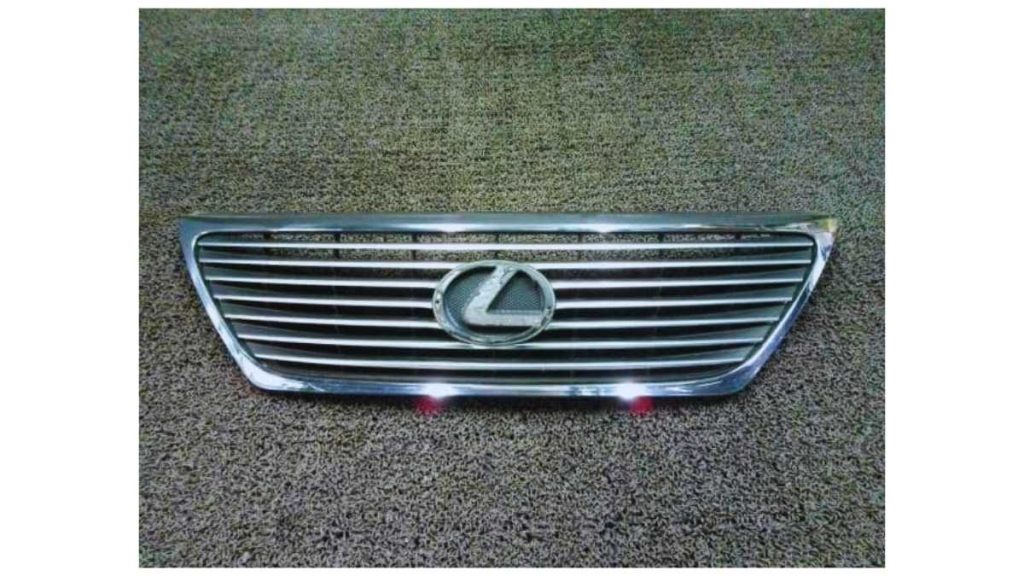
4140 Automotive Part
4140 steel is used for making axles, spindles, and drivetrain components. It performs well under moderate stress and wear conditions. So, it’s a preferred choice for automotive products.
4140 steel is generally used for frames and building beams. It provides strength and toughness for parts that are subjected to recurrent loads.
Dies, Jigs, and Fixtures are typically made from 4140 steel. Because it is easy to machine and has good wear resistance. So, it is considered appropriate for tooling components.
4140 is ideal for hydraulic cylinders and valves. Its strength and pressure resistance make it the right choice for high-pressure systems.
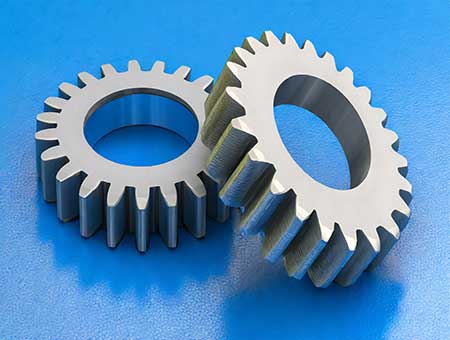
4140 Gear Part
When it comes to critical parts, it is used in gears and shafts. Its high hardness makes it sound for parts subjected to continuous load.
Piston rods and crankshafts are also made of the 4140 type. It can resist dynamic loads. So, it is an ideal material for heavy machinery.
4140 finds its application in parts like connecting rods and couplings. It is strong enough to function well in forged applications.
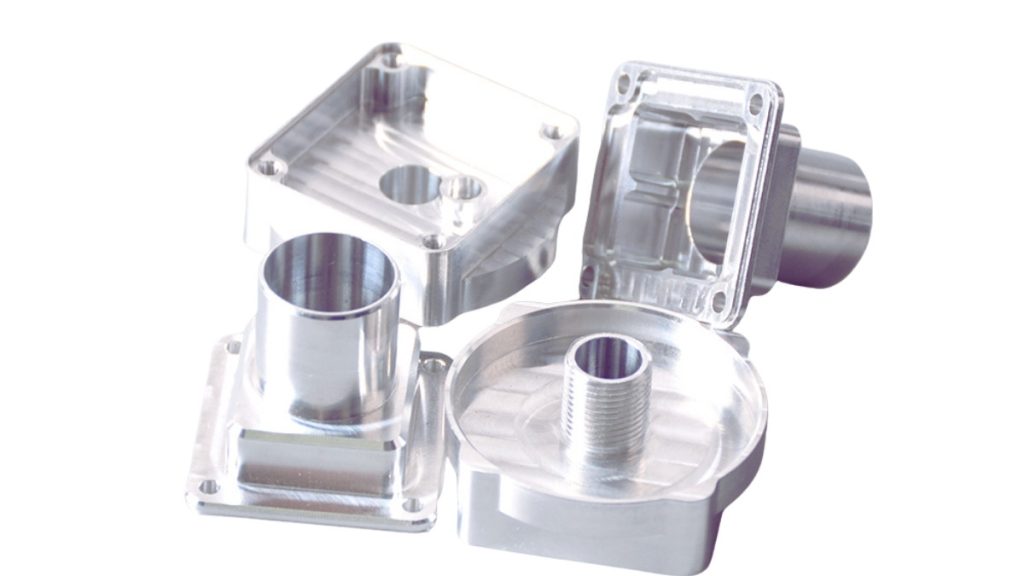
4042 Aerospace Machined Part
Landing gear and aircraft frames make 4042 widely used. Its high toughness and fatigue resistance allow its use for critical aerospace parts.
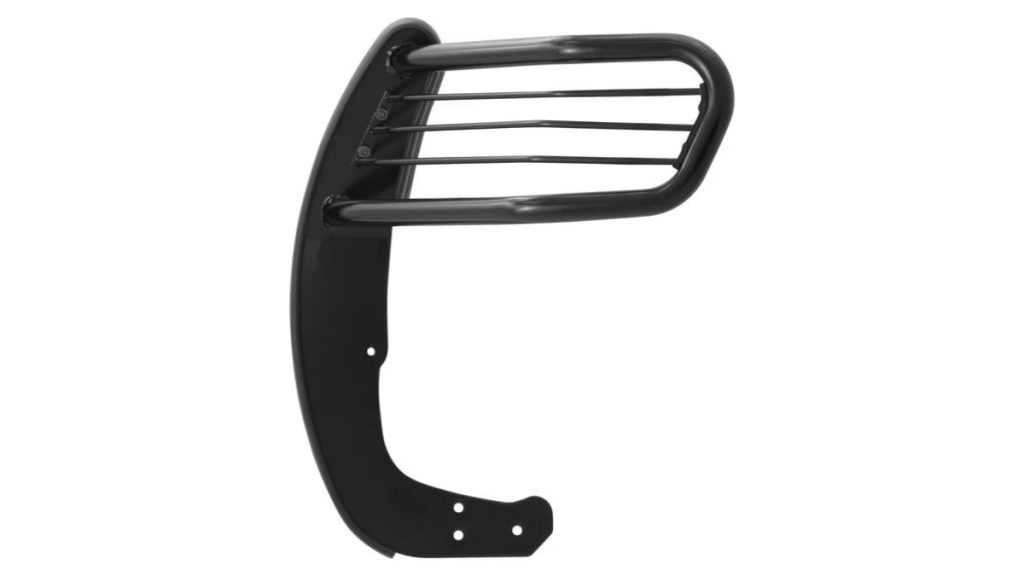
4042 Steel Automotive Grille Guard
It is used in crankshafts, drive shafts, and high-performance gears. High-stress tolerance bearing of 4042 makes it optimum for racing and heavy-duty automotive parts.
4042 is used for gears and axles on construction equipment. Its resiliency enables it to withstand extreme circumstances in heavy machinery.
4042 is applied in tank parts, firearms, and military vehicles. The impact resistance and fatigue strength are critical for the military-grade component.
In the oil and gas industry, the 4042 is found in drill collars and downhole tools. The tolerance to extreme environments makes it necessary in these applications.
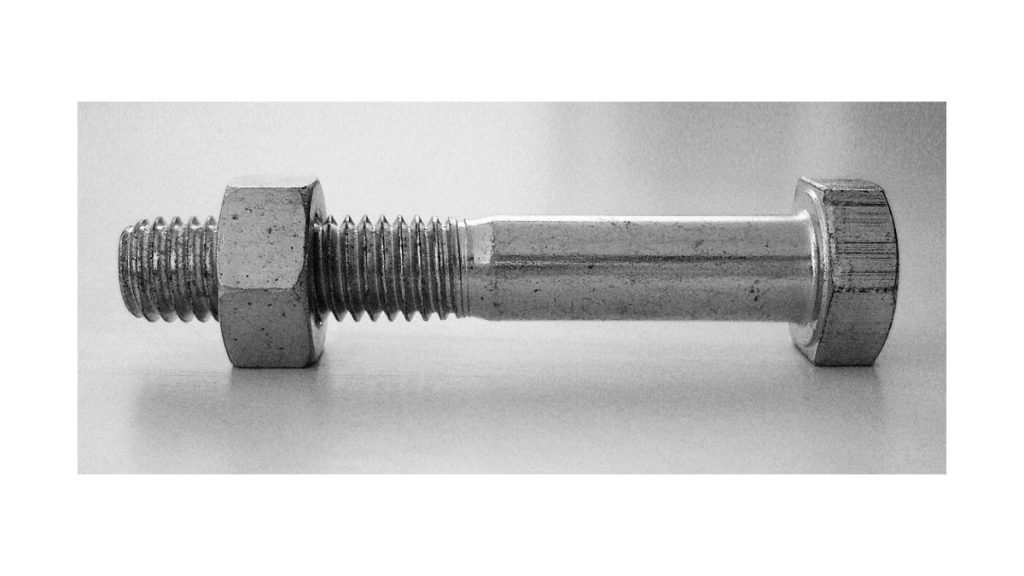
4042 Steel Fastener
4042 is used to manufacture high-strength bolts and fasteners. It is ideal for parts that need resilience and long-term durability.
4042 is applied in turbines and compressors. Its creep resistance and high-temperature strength qualify it to be used in power generation equipment.
| Factors | 4042 Steel | 4140 Steel |
| Machinability | It is easy to machine It works well with standard tools. | Good machinability when annealed It is tougher when hardened |
| Cutting Tools | It uses HSS or carbide tools | It prefers carbide tools, particularly when hardened |
| Cutting Speed | It has a moderate cutting speed. It works well for mass production | It has a relatively slower cutting speed. But, faster in the annealed form |
| Tool Wear | Low tool wear in softer states | More wear on tools when hardened, so, it needs stronger tools |
| Surface Finish | Smooth finish, good for precise parts | Good finish in annealed state, rougher in hardened state |
| Heat Treatment | Can be heat-treated for strength and toughness | Commonly heat-treated for strength and hardness |
| Welding | It is Weldable with proper techniques | It needs pre-heating and post-weld treatment before welding |
| Surface Hardening | Can be surface-hardened for wear resistance | It is often surface-hardened for heavy-duty parts |
| Grinding | Easy to grind in the softer state | Grinding is easier in the annealed state |
When looking at steel alloys for your project, take into account the particularities of the application. 4140 steel is widely considered to be tough and powerful. It is extraordinarily effective in high-stress/high-abrasive wear applications. For such components as gears, shafts, and machine tools that must withstand harsh conditions, 4140 is a wiser choice. However, it is harder to machine in its hardened form. Its durability and heat treatability add strength, making it a top choice for critical, high-performance applications.
In comparison, for the projects that do not require extreme strength, 4042 steel provides a more balanced solution. It is comparatively easier to machine. This makes it unique for parts such as fasteners or small shafts that are subjected to moderate wear. Moreover, 4042 is usually selected for medium-duty jobs where affordability and machinability are valued. It is appropriate for parts that demand high strength and wear resistance but do not undergo the same severe conditions as 4140.
Q1: Can 4140 steel be easily machined?
4140 can be machined well in its annealed form. However, when it gets hardened, it becomes difficult to cut and needs slower speeds. To effectively cut it down, using carbide tools can be effective.
Q2: Is 4042 steel good for welding?
Yes, 4042 has a good response to standard MIG or TIG methods. It has lower carbon than 4140. This reduces the risk of cracking during welding.
Q3: Which steel is better for high-load parts?
4140 is more reliable for high-load, and impact-prone components. Its strength and toughness help resist deformation over time.
Q4: How well does 4042 steel handle everyday wear?
Yes, it holds up well in light to medium-duty conditions. However, it may not perform as well as 4140 in highly abrasive environments.
Q5: Can I heat-treat both alloys?
Yes, both alloys respond to heat treatment. For example, 4140 gains have superior hardness and tensile strength. While 4042 improves moderately.
Q6: Which one is cheaper to work with?
4042 is cheaper due to easier machining and shorter cycle times. It also requires less tool maintenance than 4140 steel.
4140 vs 4042 steel are both good choices for machining. However, they have different characteristics and unique purposes. 4140 steel is strong, tough, and works optimally for high-stress jobs such as gears, shafts, and heavy-duty parts. Moreover, it has better ductility. It is not an easy job to machine, but it produces excellent strength after heat treatment. You can find its use in aerospace, oilfield, and automotive work, where performance is the most critical.
4042 steel, on the other hand, is easier to machine and affordable. It suits medium-duty parts like pins, fasteners, and valves. It provides good wearability and performs a good job in high-volume tasks that do not require ultimate toughness. It is a good idea when speed and accuracy matter more than strength.
Chemically, 4140 has higher molybdenum and chromium. These additions make it stronger, while silicon and higher carbon content slightly result in better machinability and stability during heat treatment.
Using 4042 as a tool, you can machine and finish faster and easier than with 4140. It requires slower cutting speeds and better tooling, and will need some kind of post-machining such as plating or coating.
Select 4140 if shock, load and wear need to be handled by your project. When you want clean cuts, low cost and reliable results with no extreme stress select 4042.
